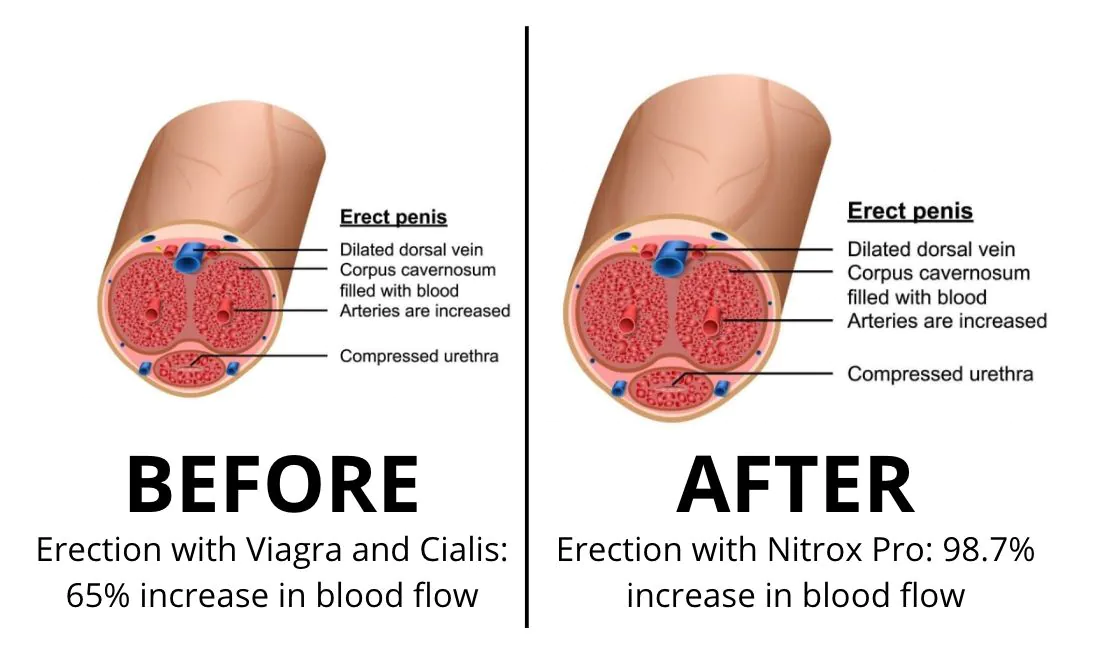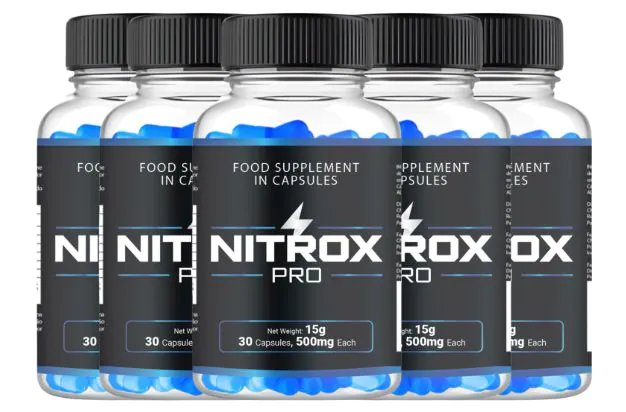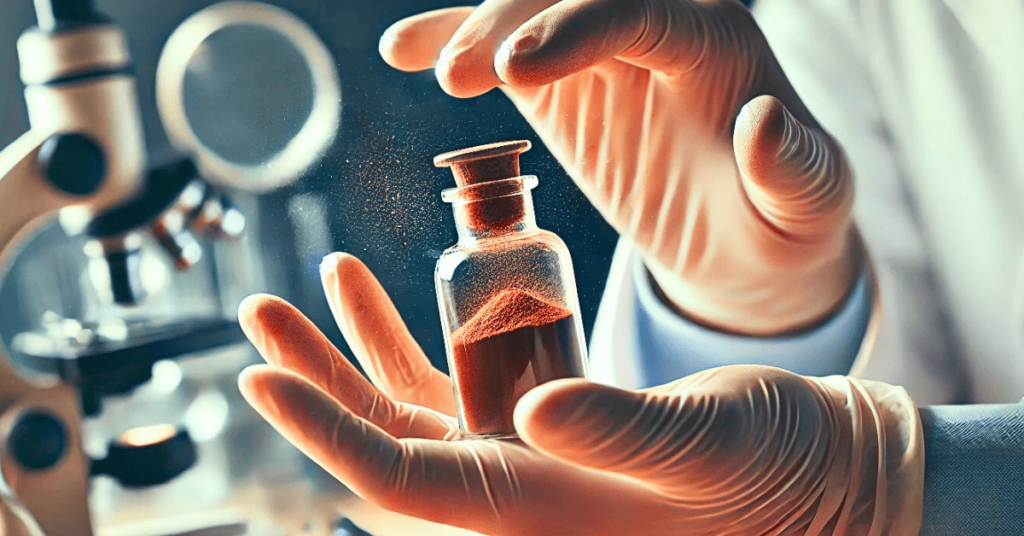Testosterone therapy is increasingly integrated into telemedicine platforms, offering men an accessible, convenient, and private way to manage hormonal health through online consultations, lab testing, and personalized treatment plans, while future trends promise advancements like AI usage and wearable technology for enhanced patient care.
Testosterone therapy is increasingly becoming integrated into telemedicine platforms, offering a modern solution for men’s health. The convenience of accessing hormonal treatments online is revolutionizing patient care and improving accessibility. As healthcare evolves, more individuals are turning to virtual consultations to manage their testosterone needs. In this article, we will delve into the mechanics of testosterone therapy, its benefits through telemedicine, how men can access these services, and anticipate future trends in the integration of telemedicine with hormonal treatments.
Understanding Testosterone Therapy
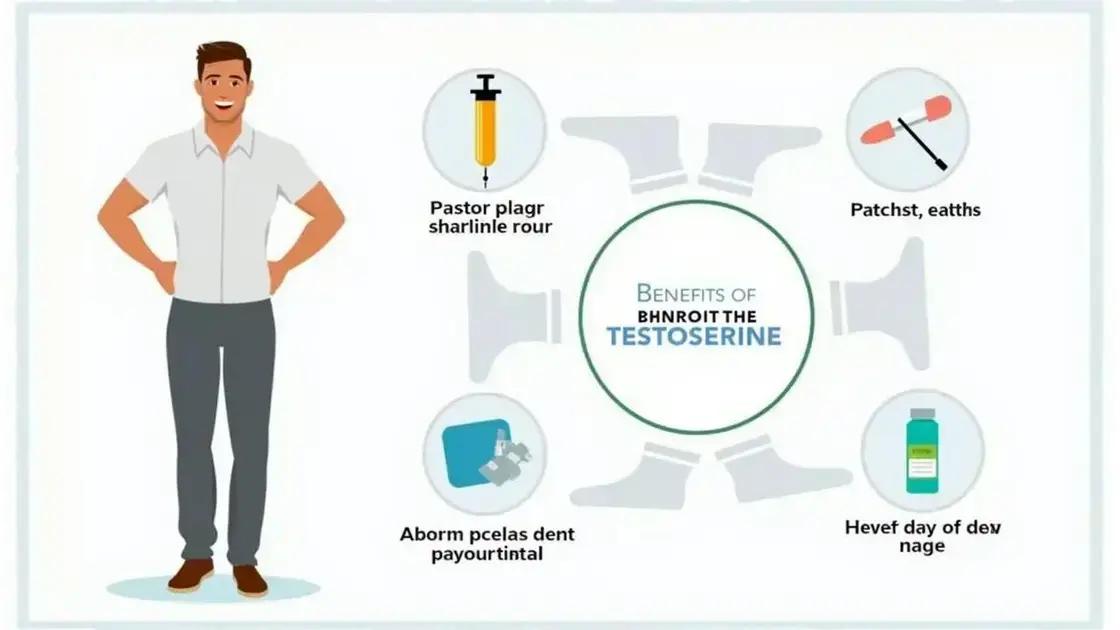
Understanding Testosterone Therapy is crucial for many men experiencing hormonal imbalances. Testosterone is a hormone that plays a significant role in various bodily functions, including muscle growth, fat distribution, and overall mood. As men age, their testosterone levels may decline, leading to symptoms such as fatigue, decreased libido, and depression.
Testosterone therapy typically involves administering testosterone through injections, patches, gels, or pellets. The primary goal of this treatment is to restore testosterone levels to a normal range, alleviating the symptoms associated with low testosterone.
Types of Testosterone Therapy
There are several forms of testosterone therapy available, including:
- Injections: Administered directly into the muscle, usually every two weeks.
- Patches: Worn on the skin, providing a steady release of testosterone throughout the day.
- Gels: Applied daily to the skin, allowing testosterone to be absorbed into the bloodstream.
- Pellets: Implanted under the skin, releasing hormones over a few months.
Who Should Consider Therapy?
Men experiencing symptoms of low testosterone should consult their doctor for evaluation. Doctors will typically perform blood tests to measure testosterone levels and assess overall health before recommending therapy. It’s important for potential candidates to discuss all medical conditions and medications with their healthcare provider to ensure safety and effectiveness.
Potential Benefits
Testosterone therapy may improve various aspects of life for men with low testosterone, such as:
- Enhanced mood and mental clarity.
- Increased muscle mass and strength.
- Improved sexual function and libido.
- Better sleep quality and energy levels.
While testosterone therapy can be beneficial, it’s essential to monitor levels regularly and consult medical professionals to manage any side effects or risks associated with treatment.
Benefits of Telemedicine for Hormonal Treatments

Benefits of Telemedicine for Hormonal Treatments are reshaping how patients receive care. Telemedicine allows individuals to consult healthcare providers without needing to visit a clinic physically. This flexibility is vital, especially for those seeking hormonal treatment, such as testosterone therapy.
One significant benefit of telemedicine is increased accessibility. Patients living in remote areas can connect with specialists who may not be available locally. This access means that more men can seek help for low testosterone and related conditions without travel burdens.
Convenience and Comfort
Another advantage is the convenience. Telemedicine allows patients to schedule appointments that fit their busy lives. Whether in the comfort of their home or office, they can easily discuss symptoms and treatment options with healthcare providers. It notably reduces the time spent in waiting rooms.
Privacy and Discretion
Telemedicine offers a level of privacy that traditional visits may not. Many men may feel embarrassed or anxious about discussing hormonal issues in person. Virtual appointments allow patients to receive care discreetly, reducing stigma and encouraging more individuals to seek help.
Comprehensive Care
Moreover, telemedicine can offer comprehensive care. Physicians can monitor patients’ progress through virtual check-ups and adjust treatments as needed. Regular follow-ups can be scheduled easily, ensuring that patients remain on track with their therapy.
Online platforms also provide access to educational resources. Patients can learn about testosterone therapy by accessing informative articles, videos, and even online support groups. This wealth of information helps empower patients to make informed decisions about their health.
How to Access Testosterone Therapy Online
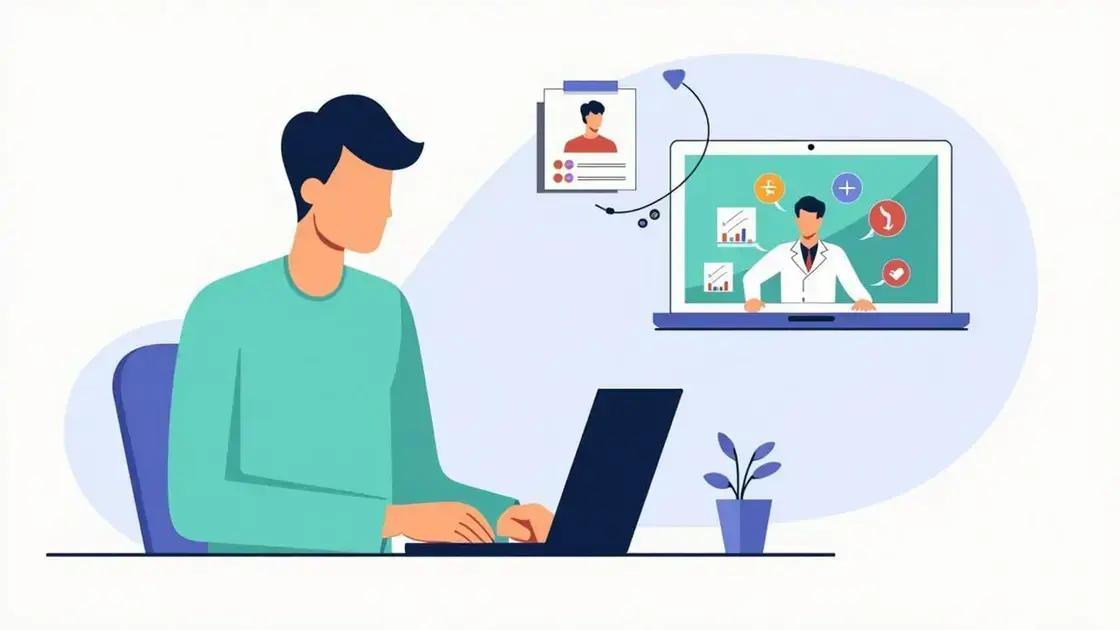
How to Access Testosterone Therapy Online has become easier with advancements in telemedicine. First, it’s important to find a reputable online clinic or telemedicine platform that specializes in hormonal treatments. Many websites focus on men’s health and provide access to quality care.
Once you’ve chosen a platform, the next step typically involves completing an online questionnaire. This will assess your symptoms and medical history. The information gathered helps healthcare providers understand your needs better and determine if testosterone therapy is appropriate for you.
Consultation with a Healthcare Provider
After submitting your questionnaire, you will have a virtual consultation with a licensed healthcare provider. This appointment can be done via video chat or through messaging. During the consultation, be honest about your symptoms and health concerns. It’s essential for the provider to have accurate information to make the best recommendations.
Laboratory Testing
If the healthcare provider believes testosterone therapy may be beneficial, they will order laboratory tests to measure your hormone levels. These tests are crucial in deciding the right dosage and treatment plan. Many telemedicine services partner with local labs where you can have your blood drawn conveniently.
Receiving Your Prescription
Once your results are available, the healthcare provider can prescribe testosterone therapy if suitable. Your prescription can be sent directly to a nearby pharmacy or even delivered to your home, depending on the service you use. Make sure to follow up with the provider if you have any questions or concerns about the therapy.
In addition to ongoing treatment, many platforms offer support resources, such as patient education and follow-up consultations. Engaging with these resources can help you maximize the benefits and ensure a successful experience with testosterone therapy.
Future Trends in Telemedicine and Hormone Therapy
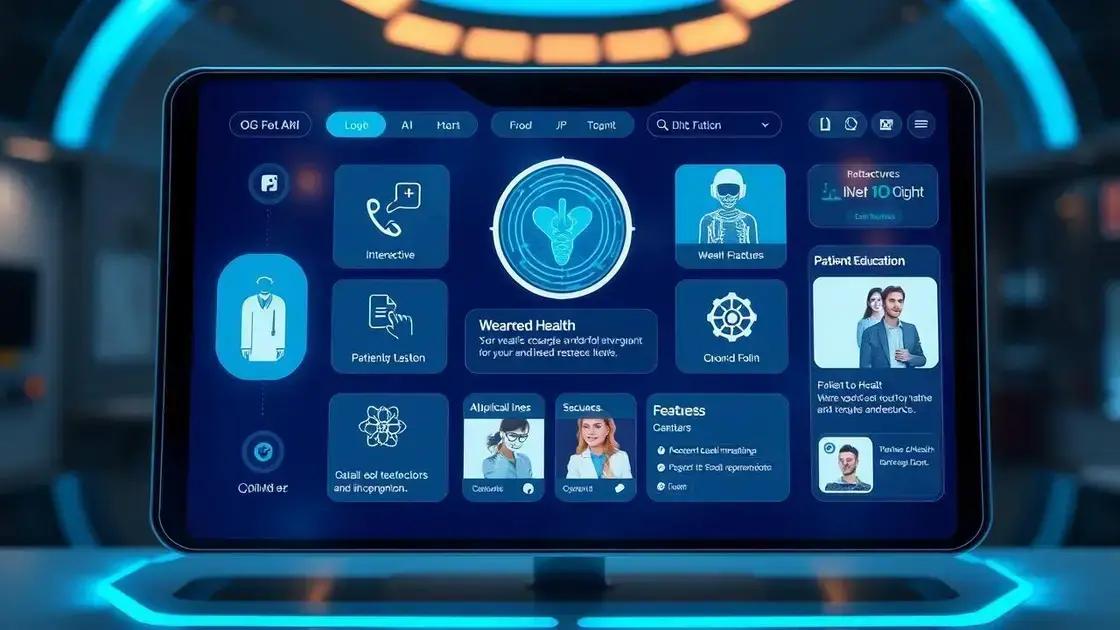
Future Trends in Telemedicine and Hormone Therapy promise exciting advancements that can enhance patient care. As technology evolves, telemedicine platforms will likely incorporate more interactive features, making consultations more engaging. Features like real-time health monitoring can provide doctors with immediate access to patient data.
Artificial Intelligence in Telemedicine
Incorporating artificial intelligence (AI) into telemedicine is a growing trend. AI can help with diagnosing hormonal disorders and recommending personalized treatment plans based on patient history. This technology can assess patterns in patient health data, providing valuable insights for healthcare providers.
Wearable Health Technology
Wearable devices, such as smartwatches, are increasingly used in hormone therapy. These devices can track vital signs and hormone levels in real time. This data can be shared with healthcare providers during appointments, allowing for better-informed decisions about treatment options.
Increased Patient Engagement
Future telemedicine platforms will emphasize patient engagement. Users will have access to educational tools, allowing them to learn more about hormonal health. This engagement can lead to better outcomes, as informed patients are more likely to adhere to treatment recommendations.
Telehealth Regulation and Standardization
As telemedicine grows, so will the need for regulations and best practices. Standardizing care protocols across platforms will ensure consistent and safe hormone therapy services. This will help build trust with both patients and healthcare providers.
Overall, these trends indicate that telemedicine will continue to play a vital role in enhancing access to hormone therapy for many individuals. Adapting to these changes will help shape a more effective healthcare system for hormonal treatments.
In Conclusion: The Future of Testosterone Therapy in Telemedicine
As we have explored, the integration of testosterone therapy into telemedicine platforms is transforming the way men access hormonal treatment. With increased accessibility, convenience, and privacy, more individuals can now seek assistance for hormonal imbalances without the traditional barriers of in-person visits.
The future trends in telemedicine suggest that innovations like AI, wearable health technology, and enhanced patient engagement will further improve the effectiveness of hormone therapy. By staying informed and adapting to these new technologies, patients and healthcare providers alike can achieve better health outcomes.
The continued evolution of telemedicine will create a more efficient healthcare system, allowing for streamlined and personalized hormonal care that meets the needs of modern patients.
FAQ – Frequently Asked Questions about Testosterone Therapy and Telemedicine
What is testosterone therapy?
Testosterone therapy is a treatment designed to restore testosterone levels in men experiencing low hormone levels, addressing symptoms like fatigue and low libido.
How can I access testosterone therapy online?
You can access testosterone therapy online through reputable telemedicine platforms that offer consultations, lab testing, and prescriptions from licensed healthcare providers.
What are the benefits of telemedicine for hormonal treatments?
Telemedicine provides increased accessibility, convenience, privacy, and ongoing support, allowing patients to receive care without the need for in-person visits.
What future trends are expected in telemedicine and hormone therapy?
Future trends include the integration of artificial intelligence for personalized care, wearable health technology for real-time monitoring, and improved patient engagement through educational resources.
Are there any risks associated with testosterone therapy?
Yes, like any medical treatment, there are potential risks and side effects. It’s essential to discuss these with your healthcare provider to ensure safe and effective treatment.
How can I ensure I’m using a reputable telemedicine platform?
Look for platforms that are licensed, have qualified healthcare providers, and offer transparent information about their services, including patient reviews and clinical protocols.




